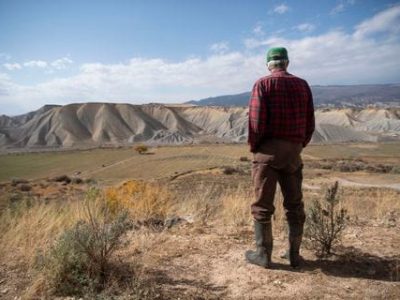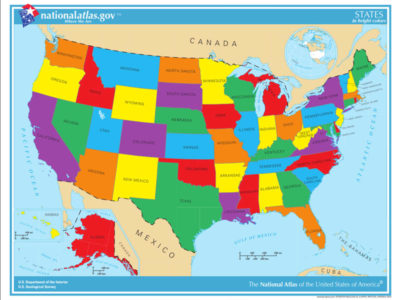Climate Adaptation
Hot Spots
Climate change isn’t uniform. Some parts of the U.S. are seeing conditions that won’t hit elsewhere for decades.
Friday’s Washington Post had a fascinating article about climate change hotspots within the United States. The largest one was on the Western Slope of the Rockies, which has already seen 2 °C of warming. The story is a reminder that the impacts of climate change will be global and yet also very much local. Before …
CONTINUE READINGThe Whipsaw Effect
Get ready for a rough ride, with sudden weather reversals and climate shifts.
Steady predictable changes in climate and weather would be easier to adapt to. Instead, we may well see some very sudden shifts, both in terms of short-term weather and longer-term climate regimes.
CONTINUE READINGElection 2020: State Legislatures
The Outlook for State Climate Policy Might Improve
The key political races aren’t just about the White House or Congress. Control of state legislatures will also be important in shaping climate and energy policy — not to mention their ultimate effect on the composition of the U.S. House due to redistricting. One of my themes is the importance of state government to climate …
Continue reading “Election 2020: State Legislatures”
CONTINUE READINGNew Report: A Cleaner, More Resilient Electrical Grid for California
California’s electrical grid is at the center of our fight against climate change, with aggressive goals to decarbonize through renewable energy. But the grid is at risk as climate impacts become more severe, particularly from worsening wildfires. To help modernize the grid to be cleaner and more resilient, the state will need deployment of clean …
Continue reading “New Report: A Cleaner, More Resilient Electrical Grid for California”
CONTINUE READINGTowards an equitable microgrid policy
The California Public Utilities Commission’s recent decision is a first step to grid resiliency for communities of color and low-income communities
The 2020 fire season has already started, and we cannot repeat the mistakes of past fire seasons. PG&E recently pled guilty to 84 counts of manslaughter after 84 people were killed when a derelict PG&E transmission line sparked the 2018 Camp Fire. The 2019 fire seasons saw widespread public safety power shutoffs (PSPS events), most …
Continue reading “Towards an equitable microgrid policy”
CONTINUE READINGThe “American family” in crisis: Colonialism, COVID-19 risk, and climate vulnerability
The fight for racial justice must include a reckoning with US imperialism.
The recent spotlight on anti-Black violence has awoken many white Americans to an uncomfortable truth: that underneath its rhetoric of equality, the United States is a fundamentally racist country. The disproportionate impact of COVID-19 on U.S. communities of color underscores this fact. The pandemic also reveals a lesser known but equally uncomfortable truth: that underneath …
CONTINUE READINGHow the Coronavirus is (Not) Like Climate Change
The two have some informative parallels, although some observers draw the wrong conclusions
The coronavirus dominates the news and much of our minds. Here at Legal Planet, we have written about the coronavirus and presidential powers, disaster declarations, fossil fuel production, decision-making under uncertainty, inequality, and cities. I will join the party and consider what are the parallels and differences between the coronavirus crisis and anthropogenic climate change, …
Continue reading “How the Coronavirus is (Not) Like Climate Change”
CONTINUE READINGHow Hot Will Things Get?
Identifying a realistic worst case scenario is complicated.
How hot will the world be in 2100? The answer partly depends on how much carbon we dump in the atmosphere between now and then. It also depends on how sensitive the climate system is to those emissions. Scientists have used 4.5 °C as the high end of the likely possibilities. That estimate derives from …
Continue reading “How Hot Will Things Get?”
CONTINUE READINGLessons of the Little Ice Age
What can we learn from the climate disruptions of the previous millennium?
The Little Ice Age wasn’t actually an ice age, but it was a period of markedly colder temperatures that began in the 1200s and lasted into the mid-1800s, with the 1600s a particular low point. It was a time when London winter fairs were regularly held on the middle of a frozen Thames river, glaciers …
Continue reading “Lessons of the Little Ice Age”
CONTINUE READINGValentine’s Day and Climate Change
Global warming will change much of our everyday lives. Even Feb. 14.
How is climate change connected with Valentine’s Day? In many ways, as it turns out. That’s an indication of the myriad ways in which climate is entangled with our lives. Whether it’s roses and chocolate, or courtship, nothing will remain quite the same as global temperatures go up and up. What about climate change and …
Continue reading “Valentine’s Day and Climate Change”
CONTINUE READING








